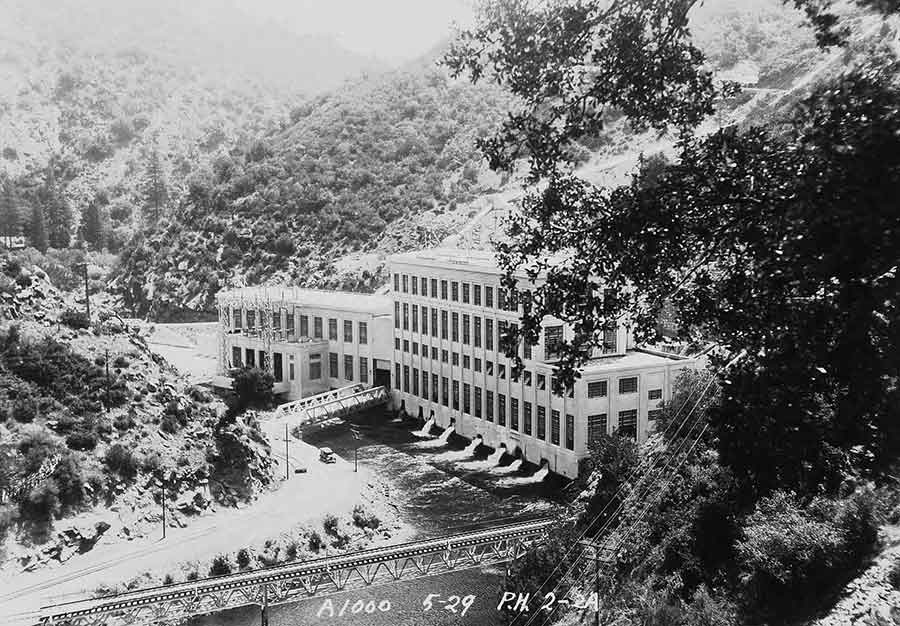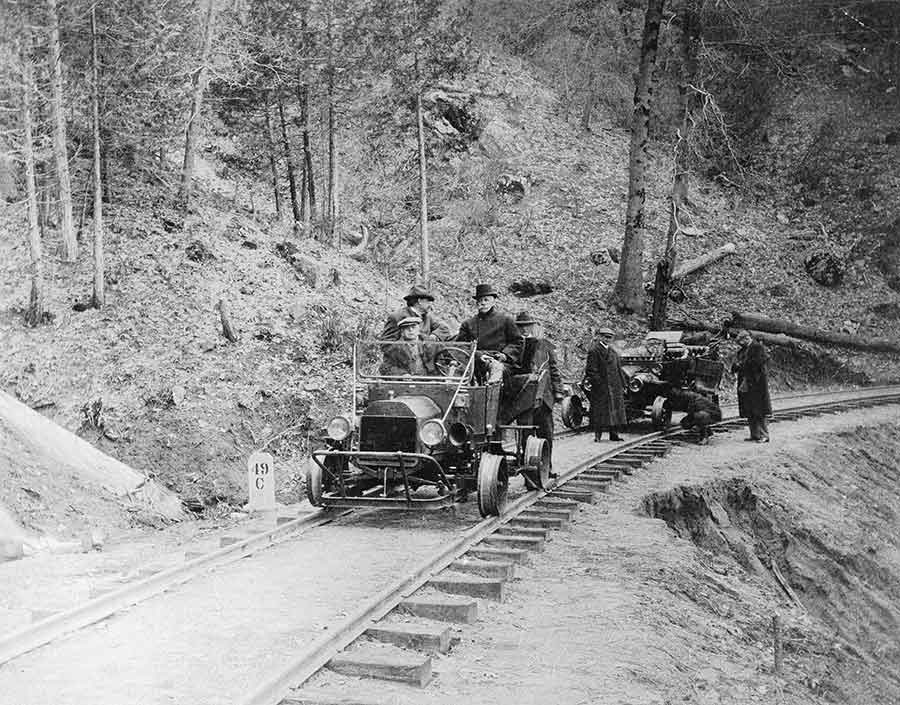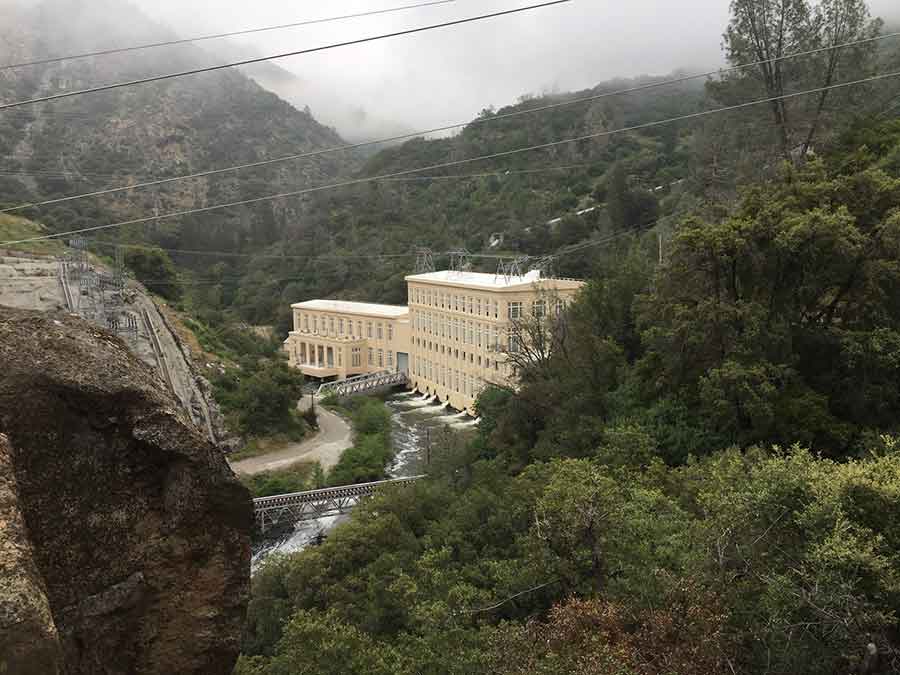The Huntington’s blog takes you behind the scenes for a scholarly view of the collections.
Big Creek and the Creek Fire
Posted on Tue., Sept. 8, 2020 by

G. Haven Bishop, Looking at Big Creek Plants 2 and 2A, May 29, 1929. Southern California Edison Photographs and Negatives. Bishop wrote: “I believe this is the first picture we have taken since the completion of the steel incline trestle across Big Creek.” The Huntington Library, Art Museum, and Botanical Gardens.
As the Big Creek area faces devastation, historian William Deverell, director of the Huntington-USC Institute on California and the West, reminds us of the important role the area has played in the history of Southern California.
The catastrophic Creek Fire, burning out of control in the Sierra Nevada Mountains north of Fresno, is but one of hundreds of fires that have bedeviled California in recent months. This one, which is burning across nearly 100,000 acres of steep and heavily forested terrain, has a particular valence with The Huntington and the history of Southern California.

Henry E. Huntington (seated on the right in the backseat of the closer automobile), inspecting track at Big Creek, California, on April 7, 1914. In 1910, Huntington purchased the water rights to Big Creek, a branch of the south fork of the San Joaquin River in eastern Fresno County, and set about designing the first massively scaled hydroelectric project in the United States. Unknown photographer. The Huntington Library, Art Museum, and Botanical Gardens.
It was here that Henry E. Huntington and his business partners developed the hydroelectric operations on the San Joaquin River and its Big Creek tributary through the Pacific Light and Power Company. Once he had sold off big chunks of his famed suburban trolley system, Huntington sank capital and energy into the generation of cheap electricity by way of gravity in these Sierra Nevada watersheds. He partnered with lumber magnate William Kerckhoff and electrical power pioneer A.C. Balch to construct the huge power operations designed to deliver inexpensive electricity 240 miles away to power-hungry Los Angeles.
Opened in 1913, the same year that the Los Angeles Aqueduct brought the Owens River the same distance to LA, Big Creek's hydroelectric facilities and infrastructure constituted one of the world's largest construction projects of the era. Owned since 1917 by Southern California Edison, Big Creek still provides nearly 15 percent of all hydroelectric power generated in California.
 Big Creek power plants, in 2017. The Huntington Library, Art Museum, and Botanical Gardens.
Big Creek power plants, in 2017. The Huntington Library, Art Museum, and Botanical Gardens.It’s impossible to know what its status is now. News from the region is spotty. The Creek Fire is burning all around Shaver and Huntington Lakes, and apparently half the homes in the picturesque little town of Big Creek have been destroyed. Campers were helicoptered out the other night. As I write this from northern Wyoming on Monday morning, the fire is zero percent contained, and the valley where I am is filled with smoke—most of it probably from nearby fires in Idaho, but some of it probably blown here from California.
We wrote about Big Creek in 2019, in the context of Founder Henry E. Huntington’s drive to develop Los Angeles into "the most important city in this country, if not the world.”
William Deverell is professor of History at the University of Southern California and director of the Huntington-USC Institute on California and the West.